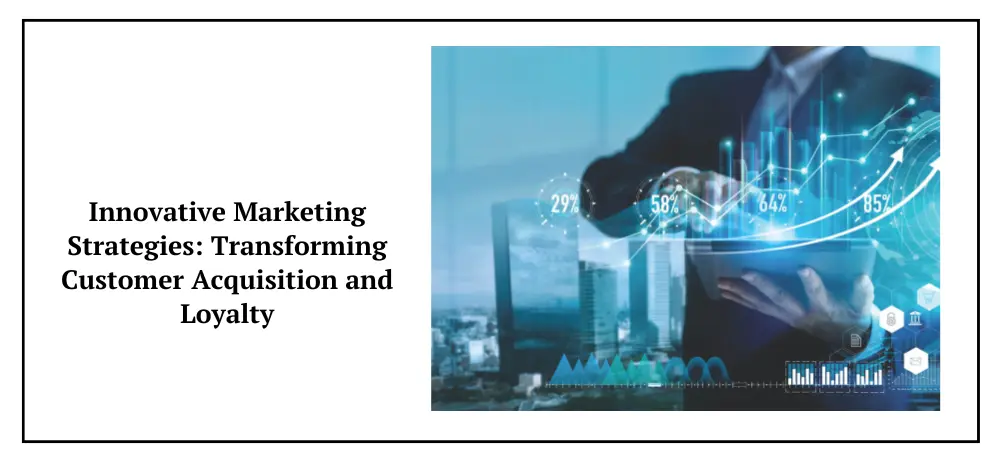- Author: Content
- Categories: Leadership, Leadership Training, Professional Growth, Professional Training

Developing a strong leadership pipeline is crucial to ensure lasting business success. However, many companies struggle to implement proper leadership development strategies, preventing them from recognizing and positioning employees effectively. This leads to skill gaps, poor succession planning, and organizational stagnation.
Read below to learn more about the proven strategies you can use, including tips on how to create a leadership development program.
Key Takeaways:
- Identifying and developing high-potential employees is essential for building a strong leadership pipeline.
- Leadership development programs should include mentorship, hands-on learning, and customized training for different career stages.
- A culture of continuous leadership growth, including feedback, collaboration, and recognition, strengthens long-term success.
- Partnering with business development consultants can enhance leadership strategies, ensuring alignment with organizational goals.
Identifying High-Potential Employees
Before developing leaders within your company, you must first identify individuals that show potential. Here’s how you can do it:
- Assess performance and potential – Identify employees with strong problem-solving skills and emotional intelligence. Also, prioritize those who demonstrate initiative, adaptability, and readiness for greater responsibilities.
- Encourage self-nomination – Give employees a voice in their growth by allowing them to express their leadership aspirations. This fosters engagement and ensures motivated individuals have opportunities to develop.
- Use leadership assessments – Tools like 360-degree feedback, personality assessments, and situational judgment tests can provide insights into leadership readiness. These assessments help objectively identify strengths, weaknesses, and growth areas.
- Observe collaboration and decision-making skills – Employees who naturally take initiative in team settings, offer solutions, and exhibit strong communication skills are often strong leadership candidates.
- Track consistent high performance – Employees who consistently exceed expectations, take ownership of projects, and demonstrate a commitment to organizational success are prime candidates for leadership roles.
Providing Growth Opportunities
Once potential leaders are identified, organizations must provide opportunities to develop their skills further.
- Mentorship and coaching – Pair employees with experienced leaders to provide management guidance, industry insights, and professional growth.
- Job rotations – Expose employees to different roles to develop a well-rounded understanding of your business. Doing so enhances their problem-solving and adaptability.
- Leadership training programs – Offer structured training on key leadership skills, like communication, emotional intelligence, and strategic thinking. This may include workshops, executive education courses, and online leadership modules.
- Stretch assignments – Assign challenging projects that push employees outside their comfort zones and develop critical leadership competencies. These projects help build their confidence, decision-making, and resilience.
- Encourage participation in industry events – Conferences, seminars, and networking events provide exposure to leadership trends and best practices.
- Support continued education – Offering tuition assistance or reimbursement for relevant leadership and management courses can help employees enhance their skills and apply new knowledge within the company.
Fostering a Culture of Continuous Leadership Development
Building a solid pipeline of future leaders requires an ongoing commitment to development.
- Lead by example – Senior leadership should model the behaviors they expect from future leaders. They should demonstrate traits like transparency, accountability, and ethical decision-making consistently.
- Encourage feedback and self-improvement – Constructive feedback fosters growth and helps employees refine their leadership skills. Regular performance discussions and peer feedback sessions can accelerate development.
- Recognize and reward leadership efforts – Acknowledge employees who demonstrate leadership qualities to reinforce your desired behaviors. Rewards can be promotions, bonuses, or public recognition.
- Promote collaboration – Encourage teamwork and knowledge sharing to strengthen leadership capabilities across departments. Providing leadership opportunities within cross-functional teams allows employees to develop stronger managerial skills.
- Create an inclusive leadership environment – Ensure leadership opportunities are available to a diverse range of employees to foster an equitable and innovative workplace.
- Encourage a growth mindset – Instill a culture where learning from mistakes is valued and leadership development is seen as an ongoing journey.
How to Create a Leadership Development Program
A well-structured leadership development program is the foundation for cultivating strong leaders within an organization. It should be designed to empower employees with the skills, knowledge, and real-world experiences necessary to take on leadership roles successfully.
Below are the essential steps to building an effective leadership development program:
1. Define Clear Leadership Competencies
Before designing a leadership program, companies must determine the key competencies required for their leadership roles. These competencies should align with the company’s values, goals, and industry needs.
- Essential Leadership Skills – Leadership requires a mix of technical and interpersonal skills. Common competencies include:
- Strategic thinking – The ability to analyze situations, foresee challenges, and make long-term plans.
- Decision-making – The capacity to evaluate information and make sound, timely decisions.
- Emotional intelligence – Leaders must know how to manage their emotions and understand the emotions of others to build stronger teams.
- Communication – Clear communication and active listening are key to fostering collaboration and alignment within an organization.
- Team management – Leaders must know how to delegate tasks, provide guidance, and inspire employees to perform at their best.
- Aligning Competencies with Business Goals – An organization’s leadership competencies should be directly tied to its business strategy. For example, a tech company focusing on innovation may emphasize skills like adaptability and innovative problem-solving, while a customer service-driven organization may prioritize relationship management and empathy.
2. Set Measurable Goals
A leadership development program should have clear objectives that define what success looks like. These goals should be specific, measurable, attainable, relevant, and time-bound (SMART).
- Common Leadership Development Goals:
- Improve leadership readiness – Increase the number of employees prepared to take on leadership roles.
- Increase internal promotions – Reduce reliance on external hires by developing internal talent for leadership positions.
- Enhance team performance – Strengthen leadership skills to improve team productivity, collaboration, and employee engagement.
- Boost employee retention – Employees are more likely to stay with a company that invests in their professional growth.
- Tracking Progress with KPIs: Companies should use key performance indicators (KPIs) to measure the impact of leadership development efforts:
- Leadership assessment scores – Measure progress through structured assessments.
- Engagement surveys – Evaluate employee satisfaction with leadership development initiatives.
- Promotion rates – Track how many program participants move into leadership roles.
- Retention rates – Assess whether leadership training is reducing turnover among high-potential employees.
3. Develop Customized Training Plans
Leadership development is not a one-size-fits-all approach. Companies should offer programs tailored to different levels of leadership experience.
- Training Tiers for Different Career Stages:
- Emerging Leaders – Employees who show leadership potential but have little to no management experience need training that focus on foundational skills like communication, problem-solving, and decision-making.
- Mid-Level Managers – These are supervisors or team leads who need to refine their leadership approach, where you must focus on areas like conflict resolution, performance management, and strategic planning.
- Senior Executives – Experienced leaders looking to sharpen high-level decision-making, vision-setting, and organizational leadership need training that include executive coaching and advanced business strategy courses.
- Blended Learning Approaches:
- Workshops and seminars – Interactive sessions led by leadership experts.
- E-learning courses – Online modules that allow employees to learn at their own pace.
- On-the-job training – Practical application of leadership skills in real work settings.
- Peer learning – Group discussions or leadership roundtables to share experiences and insights.
4. Integrate Real-World Learning
Leadership cannot be fully developed through classroom learning alone. Providing real-world experiences helps employees practice leadership skills in action.
- Hands-on Learning Techniques:
- Case studies – Analyzing real-world business scenarios helps employees develop problem-solving abilities.
- Simulations and role-playing – Immersive exercises allow participants to practice leadership in a controlled setting.
- Cross-functional projects – Exposing employees to different departments broadens their perspective and strengthens leadership adaptability.
- Leadership shadowing – Assigning potential leaders to observe senior executives and gain firsthand insights into leadership responsibilities.
- Encouraging Leadership in Daily Work:
- Assign leadership roles in team meetings or company initiatives.
- Encourage employees to take charge of department-wide improvements or special projects.
- Rotate employees through different roles to expand their leadership skills.
5. Provide Coaching and Mentorship
Personalized guidance from experienced leaders is one of the most effective ways to develop new leaders. A strong mentorship and coaching program ensures employees receive the support they need to grow.
- Mentorship Programs:
- Pair employees with senior leaders who can offer insights and career guidance.
- Encourage regular mentor-mentee meetings to discuss leadership challenges and progress.
- Provide structured mentorship goals to keep development on track.
- Executive Coaching:
- Coaches provide one-on-one support to help leaders refine their skills.
- Coaching can focus on specific challenges, such as improving executive presence or handling conflict.
- This program helps high-potential employees transition smoothly into leadership roles.
- Peer Coaching and Networking:
- Encourage leadership candidates to connect with one another for mutual support.
- Create a leadership network within the organization to share knowledge and experiences.
6. Evaluate and Adjust the Program
Leadership development is an ongoing process that requires regular assessment and refinement. Companies should measure program effectiveness and adjust strategies based on feedback and outcomes.
- Methods for Evaluating Leadership Programs:
- Employee feedback surveys – Gather insights from participants on what works and what needs improvement.
- Performance assessments – Measure leadership competency gains through evaluations and feedback.
- Business impact analysis – Assess whether leadership development efforts contribute to business growth and team success.
- Continuous Improvement Strategies:
- Regularly update training content to keep up with industry trends and leadership best practices.
- Adapt programs based on business needs and leadership challenges.
- Encourage a feedback loop where employees, mentors, and senior leaders provide input on program effectiveness.
7. Partner With a Business Development Consultant
Business development consulting services offer expert guidance to enhance leadership development strategies. These consultants help provide structured solutions that align with an organization’s mission and vision.
Here’s how they can help:
- Assessing leadership needs – Conducting in-depth evaluations to identify strengths, weaknesses, and development gaps.
- Designing tailored programs – Creating structured, level-specific leadership training for maximum impact.
- Providing expert coaching – Offering executive coaching to refine skills, build confidence, and prepare leaders for advanced roles.
- Implementing best practices – Bringing proven strategies and industry insights to enhance leadership training.
- Aligning with business goals – Ensuring leadership development supports long-term business growth.
- Evaluating and refining programs – Continuously assessing effectiveness and making data-driven improvements.
Create a Solid Leadership Pipeline
Effective leadership development strategies help organizations nurture talent, build resilience, and drive organizational success. By identifying high-potential employees, providing growth opportunities, and fostering a culture of continuous development, companies can cultivate strong leaders from within.
Looking to strengthen your leadership pipeline? Pinakle specializes in helping businesses develop and implement effective leadership development programs. Visit Pinakle to learn how we can support your growth initiatives through our comprehensive and tailored leadership development methods.










